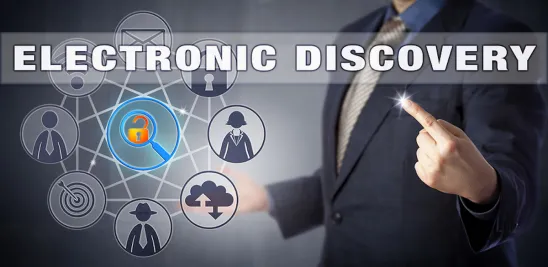By addressing how e-discovery issues will be handled in a particular case, ESI protocols can serve a valuable role in escalating such issues for early resolution and reducing later disputes on these topics. Below are five simple reminders for the next time you draft and negotiate an ESI protocol.
1. Start your draft by consulting model ESI protocols. Many courts have adopted default orders, “meet and confer” checklists and forms, and other guidance materials to assist parties in discussing e-discovery issues and documenting their points of agreement and any remaining items of contention. Counsel should draw upon any such materials relevant to the court in which their cases are pending, and they may also want to analyze some other examples of ESI protocols in order to determine the best way to address common e-discovery issues, including the scope of the parties’ respective preservation and production efforts and the format specifications for productions.
2. Learn about your case to inform the customization of your ESI protocol. By understanding the nuances of the relevant matter, the client’s relevant electronically-stored information, and the systems and platforms on which this information resides, counsel can craft an ESI protocol designed specifically for their case. For instance, a case involving source code or data stored on proprietary databases would benefit from adopting an ESI protocol with provisions that address how these particular types of information should be processed and produced. Similarly, ESI protocols for cases involving personal data of foreign data subjects are often improved through inclusion of provisions that accommodate relevant data privacy and protection laws of jurisdictions other than the United States. Because many corporations are increasingly implementing enterprise collaboration systems with communication formats that use hyperlinked files instead of embedded attachments, counsel representing such corporation should consider reviewing and revising their ESI protocols to address how such hyperlinked files are treated during the collection, processing, and production steps of electronic discovery.
3. Don’t forget about privilege and confidentiality considerations. While these protocols are often called “ESI protocols,” they often address issues that relate to all discovery in a matter. For instance, ESI protocols often outline how parties can “clawback” inadvertently produced documents that are subject to attorney-client privilege and/or work product protection and how parties must identify documents and information withheld from their productions through privilege logs. Similarly, such protocols (or separate protective orders often entered at the same stage of litigation) often define types of documents and information that must be treated differently by receiving parties in order to preserve their confidentiality and explain how parties should mark documents and information in order to require such treatment. Addressing these issues at the same time as the other issues central to the ESI protocol usually makes sense as part of a comprehensive focus on these discovery issues.
4. Consider having the ESI protocol adopted by the court as an order. In many cases, having the ESI protocol entered as a court order (rather than merely acting as an agreement among the parties) is beneficial. Violations of court orders have more direct negative consequences than violating an ESI protocol that is only an agreement among the parties. Also, an ESI protocol entered as a court order can include provisions that apply to third parties producing documents under subpoena. In federal court, Federal Rule of Evidence 502(d) provide for broader protections against the waiver of attorney-client privilege and/or work product protection when ESI protocols that include privilege “clawback” provisions are entered as court orders compared to when such ESI protocols are only agreements among the parties.
5. Lean on colleagues with e-discovery experience and expertise. Developing an ESI protocol is one of the early steps in devising a case’s e-discovery strategy, so it is prudent to involve people with e-discovery and/or technology insights as you undertake this work. While providing advice regarding the ESI protocol, these individuals can also offer guidance that informs your ongoing case assessment and broader discovery planning.



 />i
/>i

